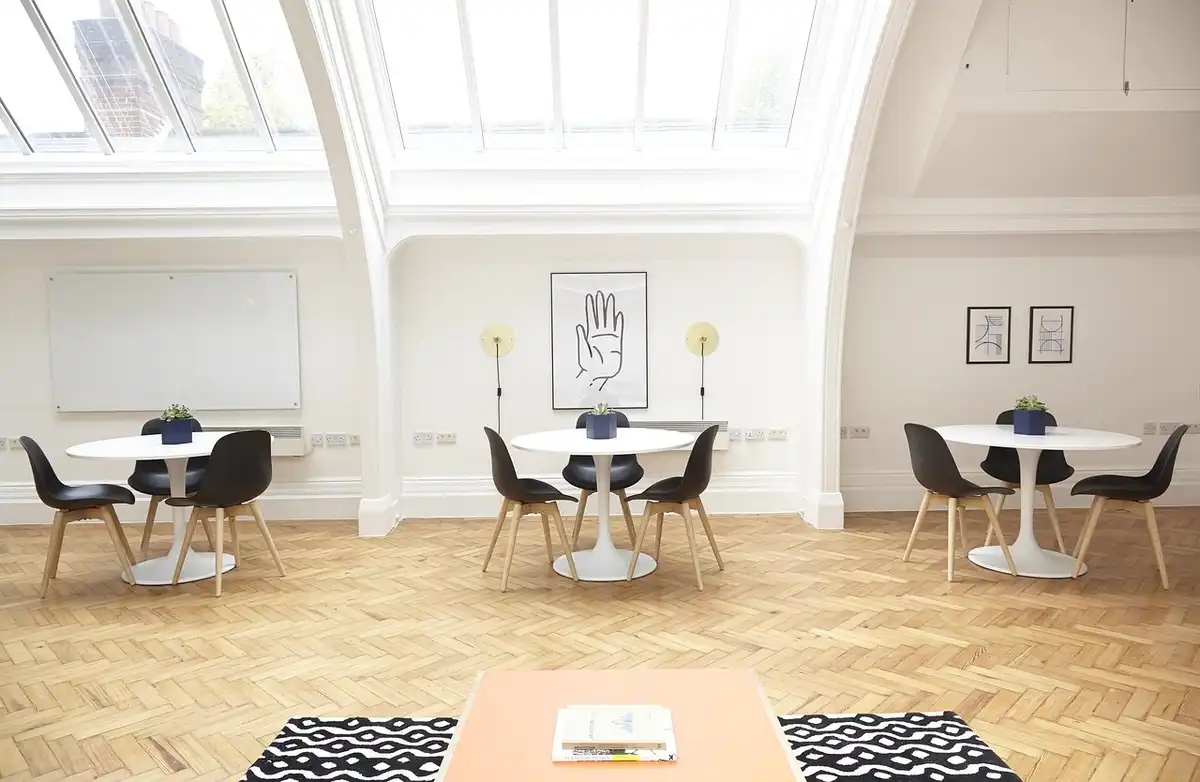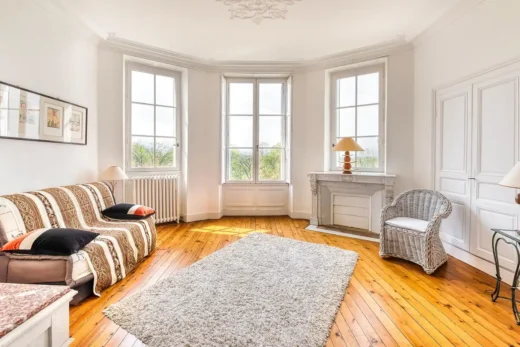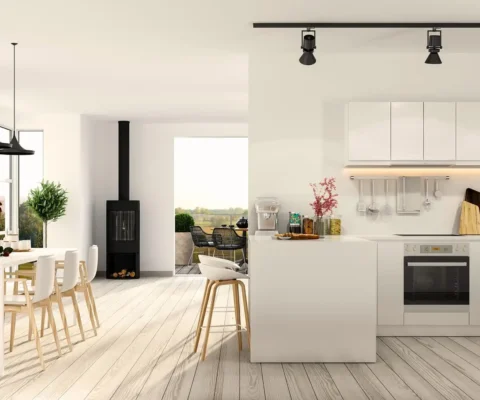Daylighting strategy: modern architectural applications, apartment property, New homes
Daylighting Strategy: Modern Architectural Applications
24 April 2025
Natural light streaming through a building can transform spaces, influence mood, and enhance ambience. Architects and designers seek to integrate nature with indoor environments, making strategies for harnessing daylight crucial in modern architectural applications. This approach is a vital component in creating sustainable, energy-efficient structures. From improving occupant well-being to reducing reliance on artificial lighting, natural illumination offers numerous benefits that can significantly impact the quality and functionality of any space.
The Importance of Daylighting in Architecture
Harnessing daylight involves strategically placing windows, skylights, and other openings to capture the sun’s rays. Its significance in architecture extends beyond aesthetics. The proper use of natural light reduces energy consumption, lowers utility bills, and contributes to environmental sustainability. It is crucial in improving living and working environments by enhancing visual comfort, reducing glare, and maintaining a connection with the outdoors.
For instance, utilising rooflights and skylights brings in more natural light and offers design flexibility. You can significantly transform your home with a skylight to enhance its brightness and create a welcoming atmosphere. Careful placement and modern technology can tailor these features to suit various architectural styles and functions.
Enhancing Building Performance with Natural Light
Incorporating natural light into buildings can significantly enhance their performance. Structures can lower their energy consumption by reducing the need for artificial lighting, thus supporting eco-friendly initiatives.
Comfortable and naturally lit environments have been shown to boost productivity, enhance mood, and promote well-being. This approach is particularly beneficial in educational institutions, offices, and healthcare facilities where lighting quality directly affects people’s performance and health.
In an office setting, strategically installed skylights can illuminate workspaces naturally, reducing eye strain and enhancing employee satisfaction. Modern glazing technologies assist in controlling the intensity and distribution of light, ensuring comfort throughout the day without overheating the space.
Techniques and Technologies in Modern Natural Illumination
Modern architectural applications that harness sunlight employ various techniques and technologies to maximise benefits. Light shelves, light tubes, and advanced glazing systems work in tandem to optimise light distribution and minimise heat gain. These technologies create flexible, adaptable spaces that cater to changing needs throughout the day and seasons.
Light shelves reflect daylight deeper into interiors, reducing reliance on electric lighting. Light tubes effectively channel natural light into areas that are hard to reach, such as basements or interior rooms without windows. Together with advanced glazing that can filter and control light, these technologies make natural illumination a viable solution for various architectural challenges.
In addition to light shelves and tubes, advanced glazing technologies are developing. These innovations include low-emissivity (low-E) glass that helps regulate temperature while allowing maximum sunlight to enter. This technology provides a barrier that reflects heat into the building during winter while keeping unwanted heat out during summer, creating an energy-efficient environment.
Integrating Natural Light in Urban Design
Urban areas often pose unique challenges for capturing daylight due to dense construction and limited access to direct sunlight. However, innovative design solutions can overcome these obstacles by incorporating reflective surfaces, translucent facades, and vertical gardens that maximise available light. Urban planners and architects must consider the positioning of buildings, street widths, and material finishes to enhance natural lighting in city environments.
Reflective materials and strategically oriented openings in urban high-rises can ensure that even the lower floors receive adequate sunlight. Incorporating natural light into urban design can enhance residents’ well-being, reduce energy demands, and create more visually appealing spaces.
The Role of Natural Light in Sustainable Architecture
Sustainability is a core consideration in contemporary architecture, and the strategic use of sunlight is at the forefront of this movement. By leveraging natural light, architects can significantly reduce buildings’ carbon footprints. This approach aligns with global initiatives to combat climate change and promote renewable energy solutions in building design.
Sustainable design involves the efficient use of resources and the creation of healthier environments. Strategies for harnessing daylight provide natural illumination, improve indoor air quality, and foster a connection with nature—crucial elements in sustainable architecture. By integrating rooflights and skylights, architects can design buildings that harmonise with their surroundings while minimising environmental impact.
Integrating natural light into sustainable architecture encourages a lifestyle that values health and wellness. By prioritising access to daylight, architects can create spaces that positively influence occupant behaviour, promoting outdoor activities and a closer relationship with nature. This trend reflects a growing awareness of the importance of environmental well-being in conjunction with human health.
Challenges and Solutions in Natural Light Integration
Despite its benefits, incorporating natural light into architectural design can present challenges. Glare control, heat gain, and privacy are common concerns that require careful consideration and innovative solutions. Architects must balance the need for natural light with the functionality and comfort of the space to achieve optimal results.
Glare can be mitigated through adjustable shading systems, reflective films, and carefully selected glazing that filters direct sunlight. Heat gain, particularly in warmer climates, can be controlled with insulated glazing and strategic placement of daylight openings to ensure that spaces remain comfortable year-round. Privacy issues can be addressed with frosted or tinted glass, allowing light to enter while preserving discretion for occupants.
Natural Light and Human Well-being
The influence of natural light on human well-being cannot be overstated. Exposure to sunlight regulates circadian rhythms, improves sleep patterns, and enhances overall health. This biological connection to daylight is essential for maintaining mental and physical wellness.
Students exposed to natural light have been shown to achieve better academic performance and exhibit improved behaviour in educational settings. Similarly, employees working in naturally lit offices report higher job satisfaction and productivity than those in artificially lit environments.
The psychological benefits of natural light are profound. Research indicates that environments filled with natural light can reduce stress levels and improve mood, leading to a more positive experience in both residential and commercial settings.
Implementing strategies for harnessing daylight can enhance these benefits, transforming spaces into environments that nurture and support occupant health and well-being. As such, architects and designers must prioritise the integration of natural light as a key element in their projects to promote healthier living and working environments.
Future Trends in Natural Light Solutions
The future of harnessing daylight in architecture promises even more innovative solutions. Smart windows that automatically adjust to changing light conditions, dynamic shading systems, and advanced materials will enhance the efficiency and adaptability of natural illumination strategies.
These advancements will enable architects to create buildings that are beautiful, functional, resilient, and responsive to environmental changes. Embracing these future trends allows architects and designers to push the boundaries of natural light integration, creating energy-efficient spaces that enhance the quality of life for their occupants.
As the demand for sustainable, human-centric design grows, the strategic use of natural light will remain pivotal in shaping the built environment.
Comments for this guide to Daylighting strategy: modern architectural applications article are welcome.
Property Development News
New Homes
Artisan Real Estate Developments
Artisan Real Estate Sustainable Homes
Edinburgh Property Developments
Architecture Developments in the Central Belt
Springside Quarter Fountainbridge
Comments / photos for Daylighting strategy: modern architectural applications page are welcome.







